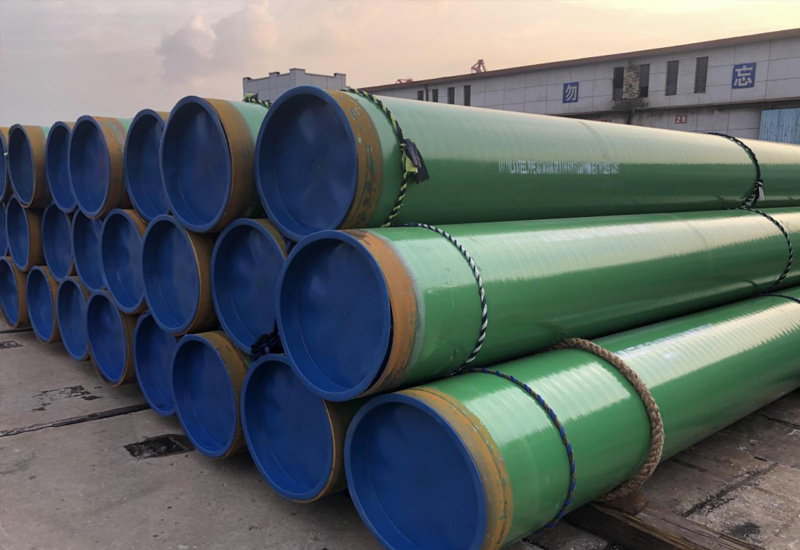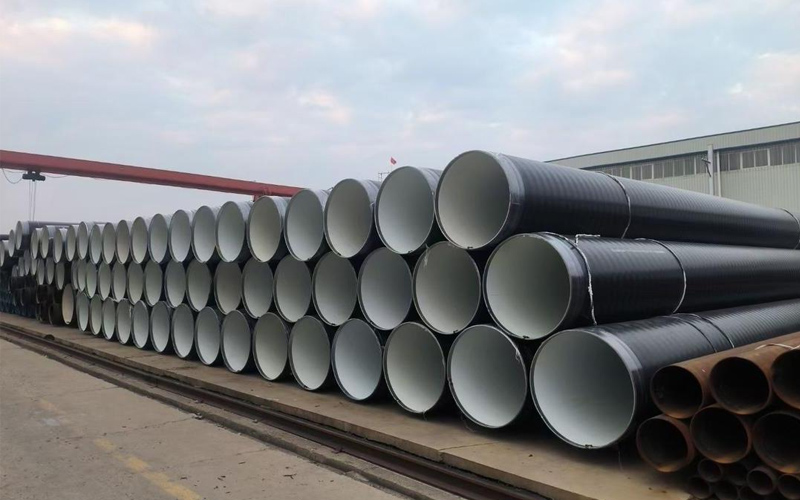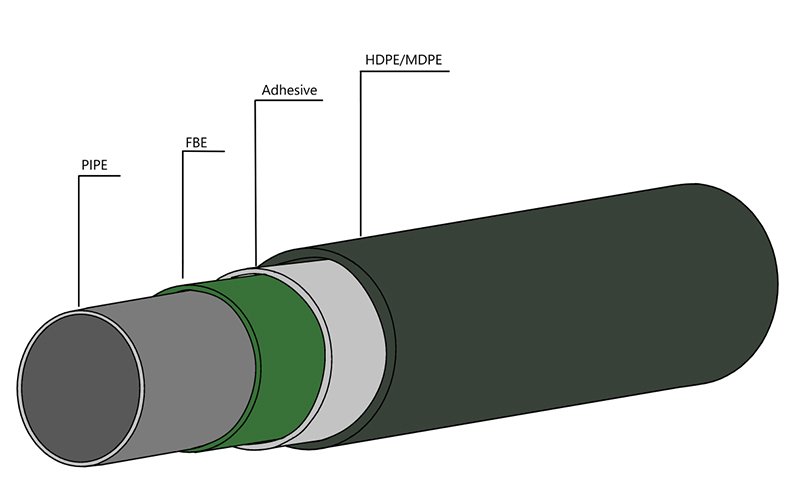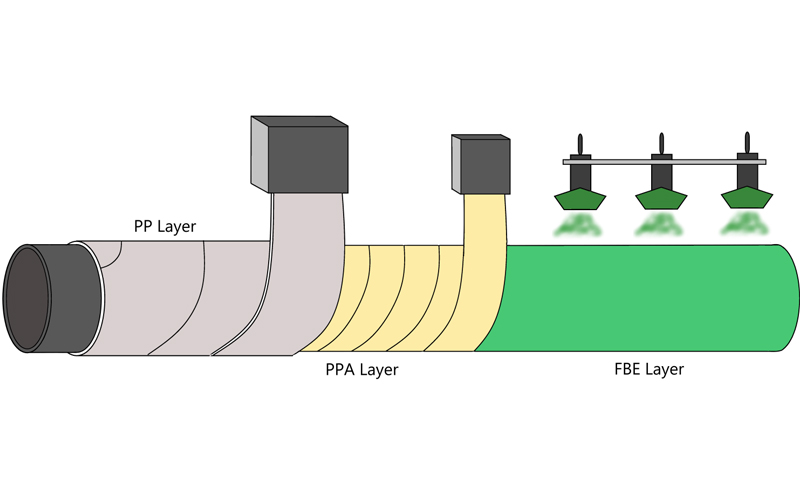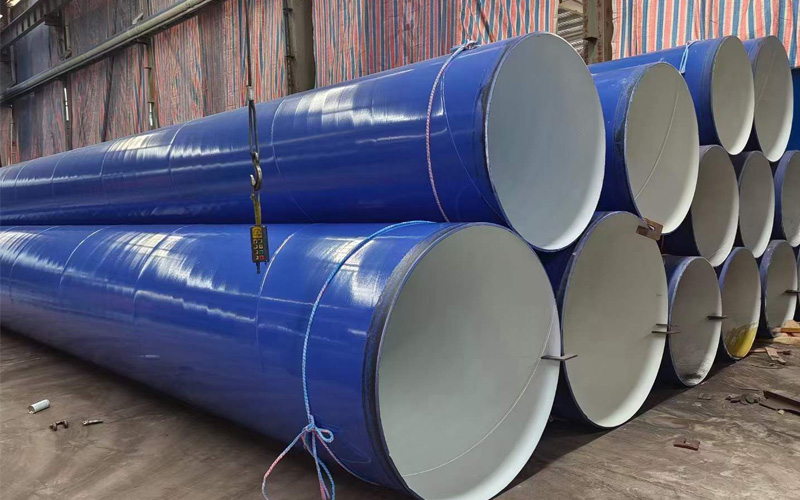Black Steel Pipe Pros & Cons: Cost vs. Durability Guide
Introduction
As a project engineer or procurement manager, you are faced with an important decision. You have to purchase steel pipe, and there are different alternatives from your vendors. The price for “Black Steel Pipe” is the lowest, there’s no doubt about that. This is its greatest single “Pro”.
But what’s the catch? What are the “Cons”?
The true question when purchasing black steel pipe is not its initial price competitive; rather, what you are getting is a low cost of ownership and a high cost of maintenance for the pipe over an extended period of time.
This guide is intended to inform that very calculation. Here we will consider the advantages and disadvantages of black steel pipe, how it used in everything from small gas lines to enormous LSAW steel pipe structures, and when it is your most-value option and then when it represents a cost trap disguised as something else.
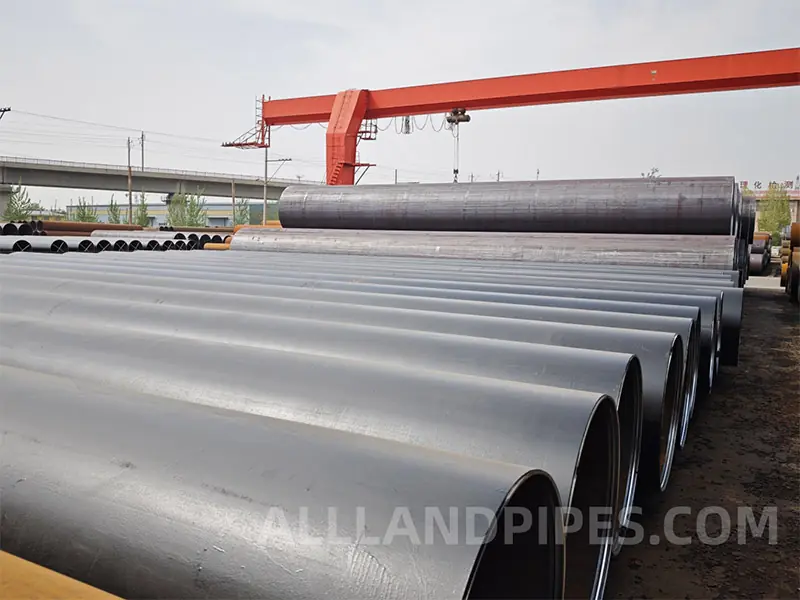
What Is Black Steel Pipe?
First of all, “black steel pipe” is not an actual specification. It is an colloquial term for plain, ungalvanized carbon steel pipe. The dark “black color” of the mill scale is a stoichiometric mixture of iron oxides that results from exothermic reactions in a solid-state during the cooling of hot steel.
It is just that important to know that the mill scale is not really protecting the steel from rusting.
“Black steel pipe” is a broad term; it can be a small, 1-inch ERW (Electric Resistance Welded) pipe used for a residential gas line, or it can be a large, 60-inch LSAW steel pipe (Longitudinal Submerged Arc Welded) or SSAW steel pipe (Spiral Submerged Arc Welded) used for a major structural foundation. For all the “Pro” and “Con” are the same — it’s strong and cheap, but it rusts.
The “Pros” – Why Black Steel Pipe is the Default Choice
The advantages of black steel pipe are simple, powerful, and directly related to lowering your project costs.
Pro 1: The Unbeatable Initial Price
And this is the absolute most important reason why you should buy black pipe. It is the simplest, rawst processed form of steel pipe. You’re paying for steel and plain manufacturing, and not the kind of expensive secondary processes like galvanizing or coating. For any project where cost is your primary concern, black steel pipe’s low upfront cost makes it the ideal place to start.
Pro 2: High Strength & Superior Weldability
Black steel pipe (generally low carbon steel) is extremely strong, tough and ductile. But the best manufacturing “Pro” it has is its weldability. It’s quick and simple to weld, significantly reducing labor costs when fabricating and installing. No need of special measures, no toxic fume extraction, no post weld repairs, what galvanized pipe can’t say, making it the most suited material for fabrication shops.
Pro 3: Manufacturing & Application Versatility
This material is a true workhorse. Its “Pros” extend to its flexibility:
· It is the norm for ERW pipe used in fire sprinkler systems (NFPA 13) and in natural gas lines (when the conveyed medium is not corrosive).
· It can be produced in heavy-wall LSAW steel pipe for high strength structural applications including building frames, trusses and heavy machinery, like.
· It is the most cost-effective option for large-diameter SSAW steel pipe used in structural piling and dredging, where its strength is the key requirement.
The “Cons” – The Hidden Costs and Risks
The disadvantages of black steel pipe are all related to one single, critical “Con”: it has virtually zero resistance to corrosion.
Con 1: It Rusts Immediately
The “black” mill scale is not a barrier. As if on cue, black steel pipe, when left out to breathe oxygen and moisture (a damp outbuilding, a drizzle, or perhaps just the raw materials of life) rust.Such corrosion is more than just a cosmetic problem: it literally eats into the steel, thinning the walls of pipe and damaging the structural integrity of the metal over time.
Con 2: High Long-Term Maintenance Cost (The “Cost Trap”)
Biggest “Con” for any buyer. When black steel is used for an exposed or outdoor situation, it needs to be shielded.This entails a painting and maintenance system as a total).
· Initial Cost: You must budget for abrasive blasting and a multi-coat paint system.
· Long-Term Cost: This paint system shall be inspected and reapplied every 5-10 years dependent on exposure.Recurring labor and material expenses can turn the “inexpensive” black pipe into the costliest choice over a 20-year asset life.
Con 3: Strict Application Limitations
Because it rusts, black steel pipe is strictly prohibited from being used for potable (drinking) water. The rust (iron oxide) will contaminate the water, making it unsafe and unpalatable.
The Showdown: Black Pipe vs. Galvanized Pipe (The Cost vs. Durability Trade-off)
The most common decision a buyer faces is: “Should I buy black pipe, or pay more for galvanized?”
Here is the quantitative breakdown:
| Feature | Black Steel Pipe (The “Pro” Choice) | Hot-Dip Galvanized Pipe (The “Con” Solver) | Implication for Your Cost & Decision |
| Initial Purchase Price | Very Low | High (e.g., +30% to 50%) | Pro: Black pipe has the best initial price. This is its primary advantage. |
| Corrosion Resistance | None | Excellent (Full Zinc Protection) | Con: Black pipe’s main disadvantage. Galvanized pipe provides 20+ years of “buy it and forget it” protection. |
| Long-Term Maintenance Cost | Very High (Requires constant re-painting) | Very Low | Con: Black pipe’s low price is often erased by its high long-term maintenance cost. |
| Weldability | Excellent | Difficult / Hazardous | Pro: Black pipe is far cheaper and faster to fabricate. Welding galvanized pipe is toxic and requires the zinc coating to be repaired. |
| Best Application | Indoors, dry areas, gas lines, or as a base material (e.g., LSAW/SSAW pipe) that will be immediately coated. | Outdoors, wet environments, fencing, non-potable water lines. | The best choice depends entirely on the end-use environment. |
Decision Guide: When is Black Pipe the “Best” Choice to Buy?
Despite its “Cons,” black steel pipe is often the best and smartest choice, if used correctly.
Scenario 1: Buy Black Pipe (Pros > Cons)
· Indoor & Dry Environments: This is the ideal application. When it comes to gas lines indoors, HVAC systems, or fire sprinkler systems, rust isn’t much of a danger.Black pipe is by far the best value due to its low price.
· As a “Base Material” for Coating: That’s one critical use case for Allland. You purchase black LSAW steel pipe or SSAW steel pipe, and then this product is shipped directly to a coating facility to be coated with a high-performance 3LPE or FBE coating prior to burying.Here you get the low price of the black pipe without the “Con” of rust.
· Structural Piling: When the SSAW steel pipe is applied as foundation piling, it is hammered into the ground, isolated from exposure to the air.In this environment deficient in oxygen, the rate of corrosion is very low, making black pipe the most economical option.
Scenario 2: AVOID Black Pipe (Cons > Pros)
· Potable (Drinking) Water: Absolutely prohibited.
· Exposed, Outdoor Applications: Don’t purchase black pipe for outdoor fencing, handrails, or structural supports unless you have a no-exceptions, long-term full maintenance plan to re-paint it every few years. The cost in the end is going to be more than buying galvanized pipe to start with.
Conclusion
The “Pros” of black steel pipe are the incomparable initial cost and the ability to manufacture from small ERW pipe sizes to large LSAW and SSAW pipe profiles. The “con” is the complete absence of corrosion resistance, which may result in significant long-term expenditures.
The best buy is that which is based on your project full lifecycle cost.
As the leading steel pipe manufacturer & steel pipe solution provider, Allland not only offers high quality black steel pipe (including LSAW and SSAW), but also brings the solution to its main drawback: world class 3LPE 3LPP and FBE coatings. We can provide a clear price comparison for you between the two options, so that you can decide which is the best and most cost effective for your project.
FAQ
Q1: How much cost can I save by buying black steel pipe vs. galvanized?
A: Normally you can save 30 to 50 percent off of the rock bottom material price. But for exterior application, this saved money can be lost by the expense of one re-painting cycle in the first 10 to 15 years.
Q2: Does black steel pipe rust indoors?
A: Yes, but a lot slower. In a moist indoor environment (such as a basement), it will still rust.In a dry, climate‐controlled indoor environment (such as the gas or sprinkler lines in a commercial building), the risk is nominal, which is why it’s the standard.
Q3: What is the best way to protect a black LSAW structural pipe?
A: The most effective protection is a multi-layer industrial paint system (like epoxy primer and a polyurethane top coat) or a hot-dip galvanized finish (if it fits). The price of purchasing this protection prior to installation is small compared to the cost of repairing rust later on.
Get Your Custom Steel Pipe Quote Today!
Provide us with your project details (like application, specifications, quantity). Our experienced team will respond with a tailored solution and competitive quote within 24 business hours.
Related Articles
ASTM A53 vs. API 5L: A Guide to Selection and Application
Introduction:Technology differences determine success or failure, and selection needs to be “precise”
Steel Density Analysis: Core Differences between Mild and Medium Carbon Steels and Industrial Applications
3LPE coated steel pipe: a solid barrier in the field of industrial corrosion protection
3LPP coated pipe: anti-corrosion guard in high temperature and high pressure environment
FBE steel pipe: the technological armor of the steel defense line
HOT TAGS
近期文章
- ASTM A53 vs. API 5L: A Guide to Selection and Application
- Cracking the Code: What Makes SSAW Spiral Steel Pipes the Engineer’s Top Pick Worldwide
- What is ASTM A252 pipe? Engineering basic solution.
- A Concise Guide to EN 10217: European Standard for Pressure Welded Tubes
- The Hydrostatic Test: Why It’s the Final Defense for API 5L Pipe Integrity




